Think you’re a master gardener? If you’re not yet using Epsom salt in your garden, you still have a thing or two to learn.
There are all kinds of unique things you can use in your garden to improve the health of your plants, including coffee grounds, eggshells, and, yes, even beer! One of the best things you can add, though, is Epsom salt.
If you’re not using Epsom salt yet, you need to give them a try. There are lots of ways that your plants can benefit from Epsom salt - many of which you may have never heard of.
Here are some of the easiest ways to incorporate this simple amendment into your daily gardening routine.
Jump to:
- Why Epsom Salt?
- 15 Ways to Use Epsom Salt in the Garden
- 1. Foliar Spray
- 2. Soil Amendment for Peppers, Tomatoes, and Roses
- 3. Apply Around Landscaping Trees
- 4. Use Epsom salt On Your Lawn
- 5. Fertilize Potted Plants
- 6. Leach Fertilizer Salts
- 7. Use Epsom salt on Shrubs
- 8. Start Seeds
- 9. Use Magnesium to Prevent Transplant Shock
- 10. Deter Pests
- 11. Improve Foliar Color of Ornamental Plants
- 12. Improve Flavor of Fruits
- 13. Remove Tree Stumps
- 14. Use Epsom salt as a Top Dressing
- 15. Improve Blooms
- Bonus tip: Treat Yellow Cucumber Leaves
- General Tips for Using Epsom Salt
Why Epsom Salt?
Epsom salt, unlike regular old table salt, is filled with minerals that can help plants absorb nutrients more effectively. They can help your plant fruit and have tons of magnesium to keep them healthy.
Magnesium is essential for plants because it helps them take up other valuable nutrients, like phosphorus and nitrogen. It can also help your plants create chlorophyll, which is vital for photosynthesis. Without magnesium, your plants may have a hard time producing fruit and flowers.
These salts are affordable and easy to find. You can find Epsom salt at most drugstores and grocery stores, typically located in the bath aisle. A cheap and easy soil amendment, Epsom salt should be in every gardener’s toolbox.
Unlike other kinds of additives, Epsom salt won’t build up in your soil and it won’t produce toxic side effects, either.
15 Ways to Use Epsom Salt in the Garden
1. Foliar Spray
Epsom salt is often used as a foliar spray for certain plants, like tomatoes. To make this kind of spray, which will provide your plants with a beneficial dose of magnesium, simply combine a tablespoon of Epsom salt with a gallon of water.
You can apply the dilution early when you see new leaves starting to appear.
Use about one gallon of mixture for every 12 inches of the plant. The best time to apply is on a cloudy day or in the early morning.
2. Soil Amendment for Peppers, Tomatoes, and Roses
While there are very few plants you can’t use Epsom salt on, there are all kinds of plants that benefit, in particular, from these additives. Tomatoes, peppers, and roses are three of the most common.
To use Epsom salt for these acid-loving plants, you'll want to amend your soil before planting with a quarter cup of Epsom salt, spread out over every 25 square feet. All you have to do is scatter these salt on the soil and then mix it in at a depth of six to eight inches.
You can also add a tablespoon of Epsom salt at the bottom of your planting hole when you are planting any of these species. It works well for cuttings as well as for transplants.
3. Apply Around Landscaping Trees
There are some species of trees that really benefit from the addition of Epsom salt, particularly landscaping trees and tropical trees.
One example is the palm tree. Palm trees used for landscaping often have magnesium deficiencies that growers call “frizzle top.” This causes the top of the leaves to look frazzled and frizzy, usually light green in color.
To address this, simply apply Epsom salt around the base of your tree. You can also spray the leaves and crown of the tree with a mixture of one tablespoon of Epsom salt to one gallon of water.
4. Use Epsom salt On Your Lawn
For lawns that are looking a bit ragged, Epsom salt can also save the day. To apply them to your lawn, you’ll want to fill a spreader with about three pounds of Epsom salt.
You don’t need to dilute it. Use the spreader to distribute the salt evenly over your lawn roughly once a year. Seven pounds will provide you with enough salt to cover every 2,500 feet or so.
5. Fertilize Potted Plants
Any kind of potted plant, be it an indoor or outdoor species, can benefit from a dose of Epsom salt. You will want to use two tablespoons of Epsom salt combined with a gallon of water. Just apply enough solution to thoroughly wet the soil and reapply once each month.
6. Leach Fertilizer Salts
Sometimes, potted plants can become oversaturated with leftover remnants of fertilizer. More often than not, toxic salts from the fertilizer can remain in the soil.
You can leach these salts, though it sounds counterintuitive, with Epsom salt. Simply dilute a teaspoon of the salts into a gallon of water, then pour it through the planter. Once the water starts leaking out the bottom, you can stop pouring in freshwater.
7. Use Epsom salt on Shrubs
There are some shrubs that love Epsom salt, too. Acid-loving shrubs like azaleas and rhododendrons benefit the most from these salts, as they tend to need more magnesium. You will use one tablespoon for every nine square feet. Make sure you water deeply after applying them.
8. Start Seeds
You can give seeds a better start by adding a tablespoon of Epsom salt and a gallon of water to the soil when you plant your seeds. You can apply this mixture at a rate of one gallon for every 100 square feet.
Make sure you blend the mixture thoroughly into the soil before watering. Magnesium helps with germination because it strengthens cell walls and provides energy for growth.
9. Use Magnesium to Prevent Transplant Shock
Transplant shock, also known as root shock, causes symptoms like leaf discoloration and wilting. When you are repotting plants for transplanting them outside, add a tablespoon of Epsom salt to the planting hole.
10. Deter Pests
There are some pests that really don’t like Epsom salt. In particular, Epsom salt can be used to keep slugs and snails away. To deter pests and boost plant growth at the same time, simply mix half a cup of salts with two and a half gallons of water before spraying onto the
foliage.
11. Improve Foliar Color of Ornamental Plants
Over time, ornamental plants leach nutrients from the soil and can develop leaves that are pale and unattractive. Although they might still be growing okay, they don’t look as nice as you’d like them to.
If you have mature foliage on your plants that is curling or yellowing, you may want to add a foliar spray of Epsom salt to address a magnesium deficiency.
12. Improve Flavor of Fruits
There are certain fruit plants, including grapevines, berry bushes, and fruit trees, that benefit from an addition of Epsom salt every month. Just mix a tablespoon of these salts with a gallon of water and apply it to the roots of the plants. You’ll notice that the flavor is much more vibrant!
13. Remove Tree Stumps
It can cost you hundreds of dollars to get rid of tree stumps on your property. However, you can use Epsom salt to get the job done for you. Simply drill a few holes on the top of the stump, roughly half as deep as the stump itself. Space these holes a few inches apart, then pour salt into the hole. Add a bit of water to moisten the holes.
Over time, the salts will dehydrate the wood and cause it to rot. You’ll be able to chop up the pieces in just a few months.
Video demonstration of this method:
14. Use Epsom salt as a Top Dressing
If you need to add a boost of magnesium during the growing season, all you need to do is sprinkle a tablespoon of Epsom salt around the base of your plant. Water it in deeply - that’s all there is to it!
15. Improve Blooms
If your plants are having trouble pushing out flowers, you may want to use some Epsom salt. Plants that are healthier and stronger will, of course, produce more vibrant blooms! Add a few tablespoons of Epsom salt when you plant, and then use it as a foliar spray when you water every other week.
Bonus tip: Treat Yellow Cucumber Leaves
General Tips for Using Epsom Salt
Epsom salt can be most readily absorbed by your plants when you dilute them with water.
Before applying Epsom salt to your plants, it would make sense to conduct a basic soil test.
This will help you confirm whether your soil is actually deficient in magnesium. Without a soil test, you can determine if your plants are deficient in magnesium by looking at their color and growth. Usually, leaves that are stunted, curled, or yellowing indicate a deficiency in magnesium.
You should avoid using Epsom salt as a primary nutrient in your garden. Although Epsom salt contains tons of magnesium, which is necessary for plants to uptake other nutrients, they don’t contain any nitrogen, phosphorus, or potassium themselves. Therefore, if you only add Epsom salt and ignore other nutrients, you may be doing your garden a major disservice.
Be careful about where you store Epsom salt if you have pets or small children. When consumed in large amounts, Epsom salt has laxative properties.
It’s pretty hard to actually overdose on magnesium, though, so if you forgot to conduct a soil test before adding Epsom salt, don’t worry. It is incredibly beneficial for a wide variety of plants, so feel free to spread them as often as you’d like!

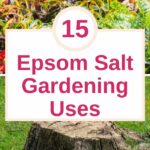

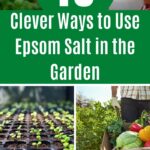
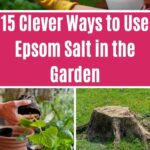
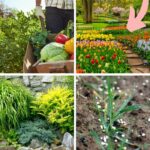



















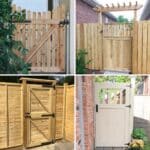
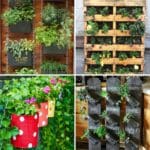

Leave a Reply